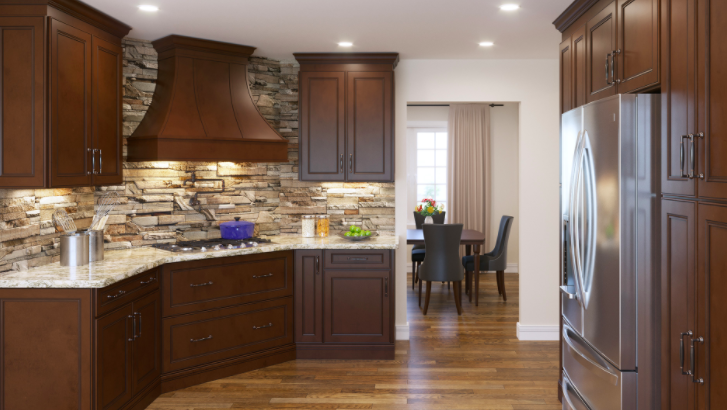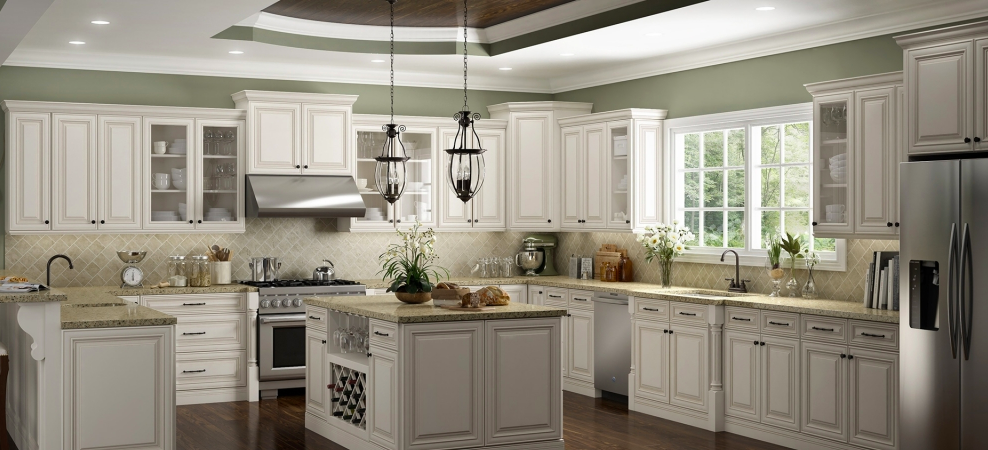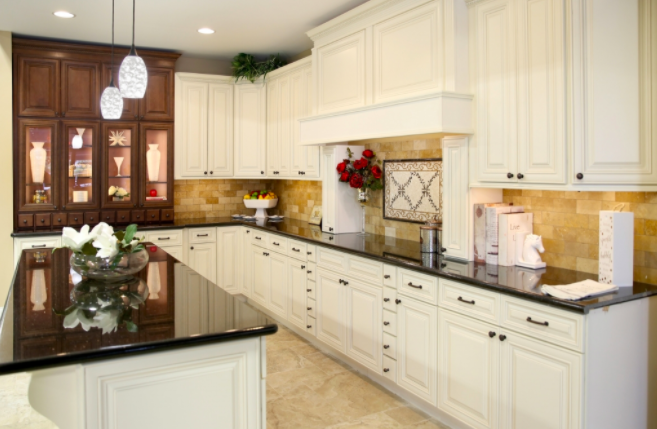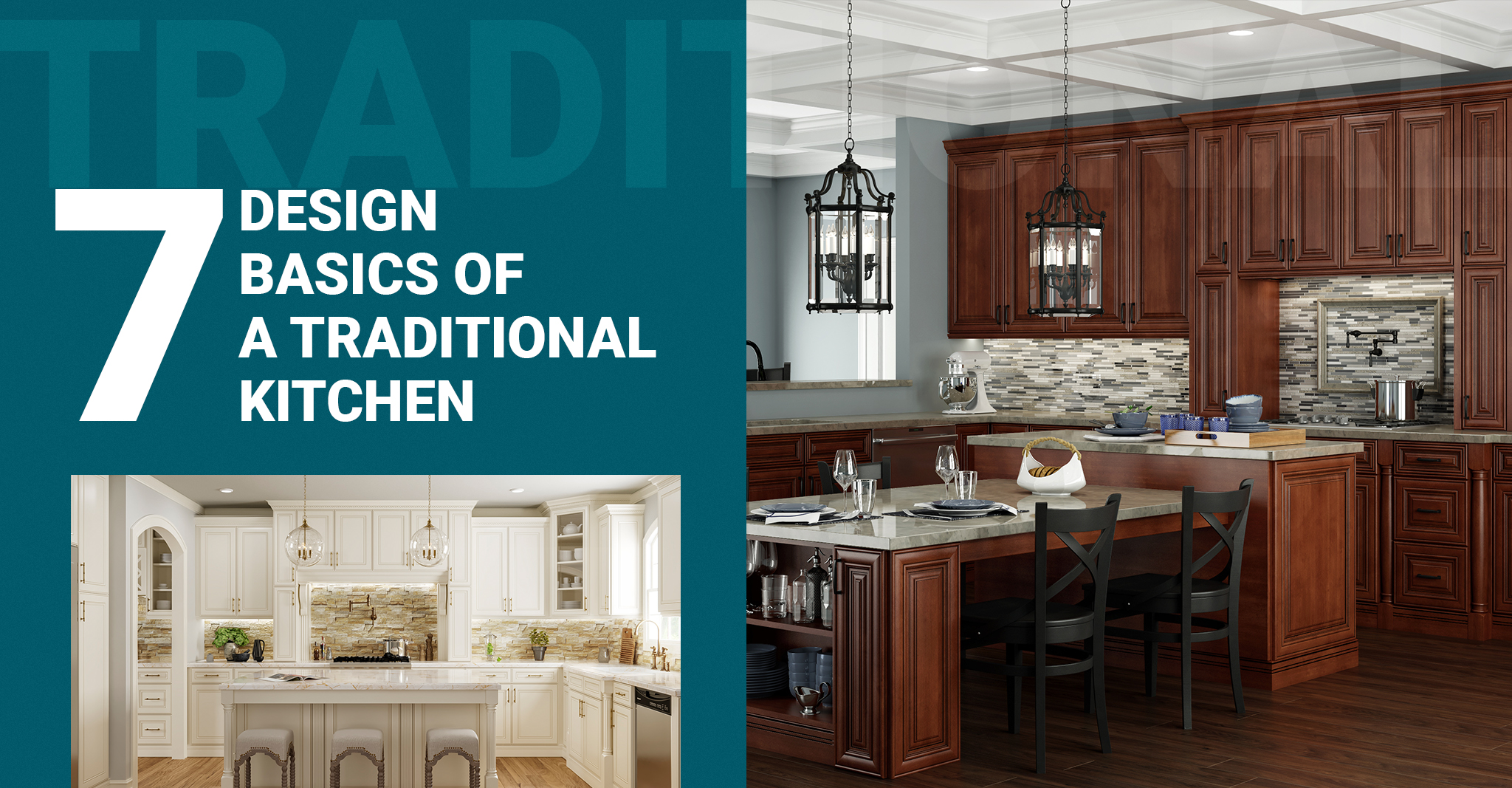Traditional design styles speak to many people. It remains a top design choice for many homeowners as they plan their kitchen remodel because the versatile appeal of many different old-world influences makes traditional design easy to customize. When you’re creating a room, the entire family will enjoy the traditional kitchen is one of the most popular design styles.
What is a traditional kitchen?
Sophistication and classic styling characterize traditional kitchen designs. The best traditional kitchens build on timeless, tried-and-true elements and allow plenty of room for today’s priorities: family fun and guest entertainment. Traditional kitchens typically feature painted cabinets and often – but not always – glass-front doors. You’ll see stone countertops and plenty of decorative detail.
What is the difference between modern and traditional kitchens?
Modern and contemporary kitchen cabinets focus on a minimalist look – smooth, sleek doors and little to no design embellishment. These styles allow cabinets to blend into the kitchen background rather than serve as a focal point. Traditional cabinets are the exact opposite, designed to stand out and become the kitchen’s focal point.
7 basic features of traditional kitchen design
While many homeowners lean toward contemporary or modern-style kitchen cabinets, traditional kitchen cabinets still enjoy strong popularity. Consider these traditional kitchen ideas to create a beautiful and inviting kitchen.
1. Adornment and Architectural detail
The standout feature you’ll see in a traditional kitchen is plenty of adornment and detail work. You can add dimension and embellishment wherever you like, in the form of crown molding, arches, exposed beam ceilings, framed cabinets with raised panels, custom wood range hoods, and furniture-like pieces all over the kitchen.

Note how this custom wood range hood adds a focal point and architectural detail to the room.
2. Framed cabinetry
Most traditional kitchens will have framed cabinetry, rather than the smooth, frameless cabinets you find in a contemporary or modern kitchen. Traditional kitchen cabinet doors will feature a frame with either a raised panel or a flushed-inset panel like furniture; the more layers, the better.

This traditional white kitchen has framed cabinetry in an antique white to create a warm and luxurious feel.
3. Neutral Color Palette
Traditional kitchens love neutral color palettes. When you think traditional, think in terms of comfort meeting luxury, or warmth meeting elegance. While modern kitchens focus on cool colors and contrast, a traditional look showcases old-world refinement.
Traditional kitchens often feature a glazed cabinet finish or a finish made to look aged and distressed. Whether you’re drawn to traditional white or antique white cabinets, a bit of glazing can add instant age and patina.

These antique white cabinets pair beautifully with a beige backsplash and black granite countertops.
4. Luxury Countertops
Traditional kitchens often make a big splash with the countertop. Choose from complimentary or contrasting colors or patterns that are busy or subdued. With a neutral color palette, your countertops can be as bold as you want. High-quality countertop materials like quartz or granite go well with traditional kitchen cabinets and add a beautiful focal point.

This kitchen’s white Tacoma cabinets pair with a quart countertop that brings in black, grey, and white to create a central focal point.
5. Simple Backsplash
In a traditional kitchen, the backsplash is more about function rather than design. With extra adornment on the cabinets, a simple, neutral backsplash avoids overwhelming the space.

The beige granite backsplash in this traditional kitchen is enhanced with veining in a darker brown. The veining adds a little pattern but does it in a subtle, relaxed way.
6. Decorative Lighting
Traditional kitchen designs add decorative elements in the form of a chandelier or ornate pendant lights. Ornate lighting is one way to pull the whole kitchen’s look together. You’ll often see fixtures typically used in a formal dining room pulled into the kitchen. This lighting look makes the kitchen feel more like a living room, suitable for relaxing and entertaining, and not just a functional area to cook.

These wrought iron pendant lights bring a formal feel to this traditional kitchen—the wrought-iron ties in the backsplash colors and hardware for a polished look.
7. Mixed Door Styles
Traditional kitchens often include cabinets with different finishes. The two-tone cabinet trend fits right into a traditional kitchen style. With this look, you’ll see one color or style of cabinet chosen for the upper wall cabinets and something different for the island. When you add a section of cabinets to make a breakfast bar or butler’s pantry, you can bring in a third or fourth color. This gives the kitchen an appealing aged feel as if special pieces have been added over time.

Traditional kitchens shine with the elegance of design elements and classic architecture originating with 18th-, 19th- and even early 20th-century American design. With embellishments on every corner, traditional kitchen cabinets bring luxurious style to the room.
Ready to design your traditional kitchen?
At Simply Kitchens, our expert cabinet designers can assist you at every step of the way. With your kitchen measurements in hand, you can begin the design process immediately and choose from various traditional kitchen cabinets with different raised-door panels and color selections you won’t find in a retail store. Browse our photo gallery and start the dream to bring your new traditional kitchen to life.


Nicely describe about traditional kitchen ideas. This is helpful for me and thanks for this.